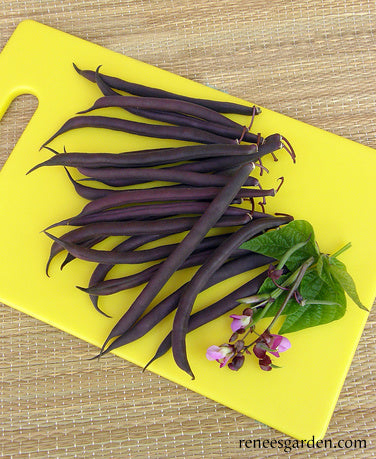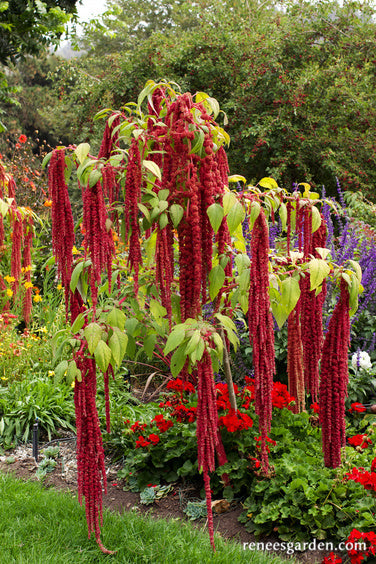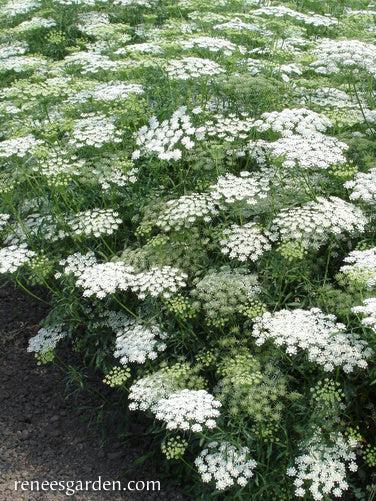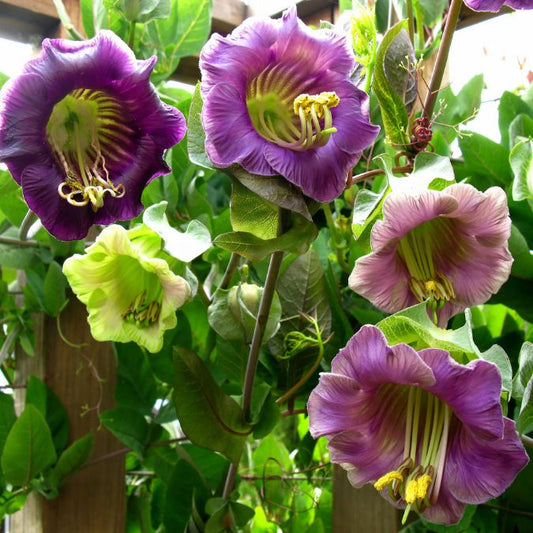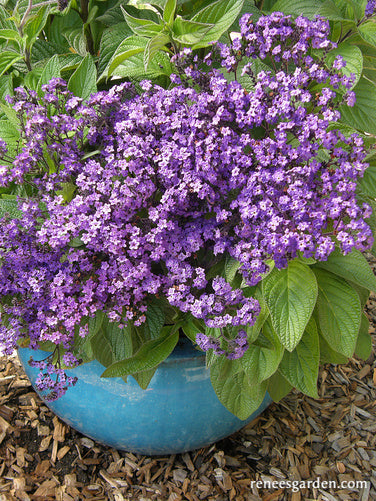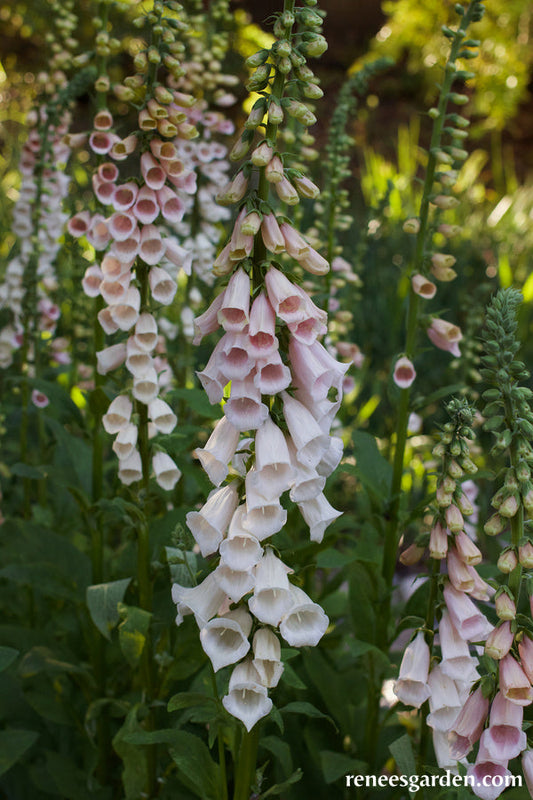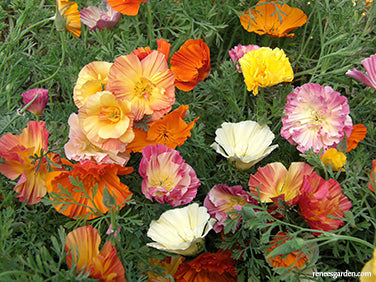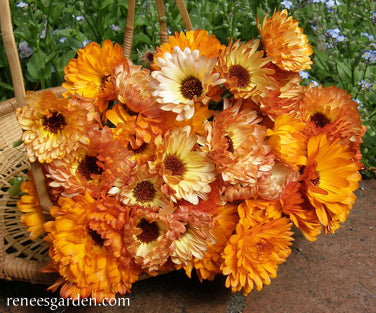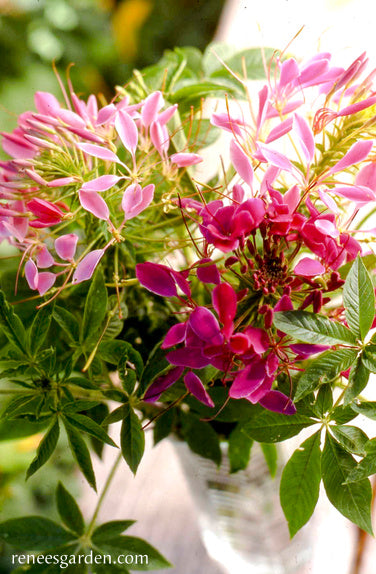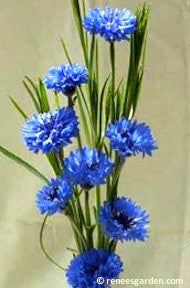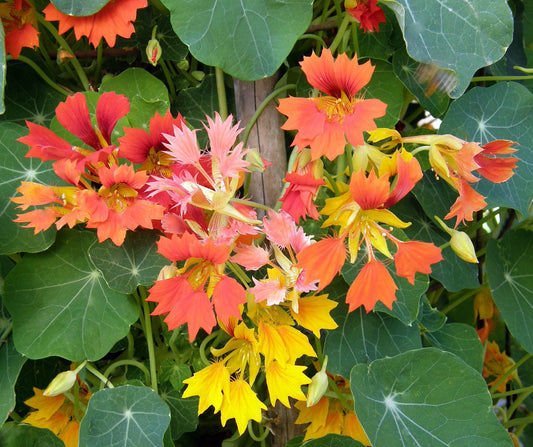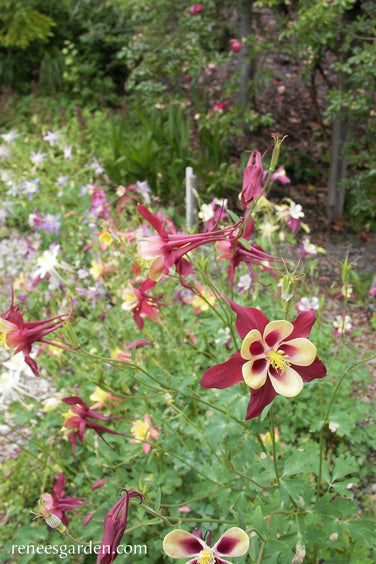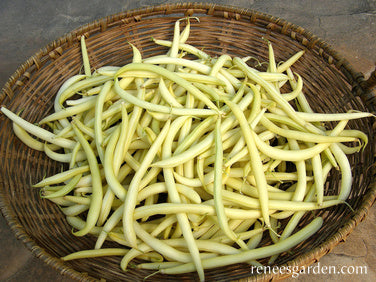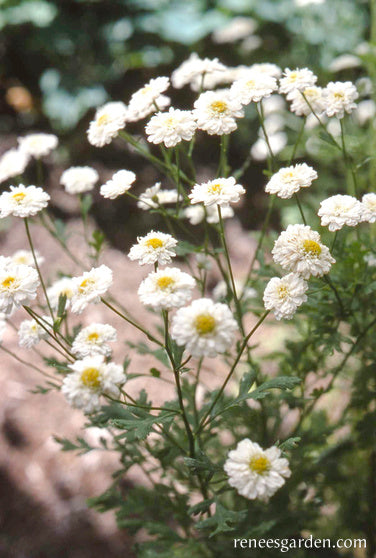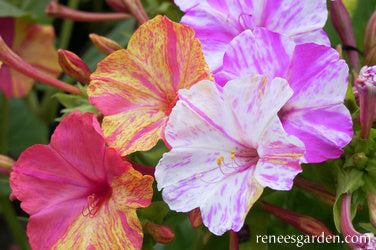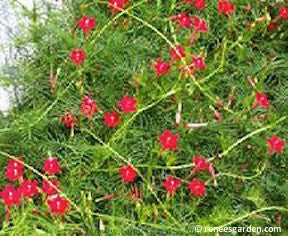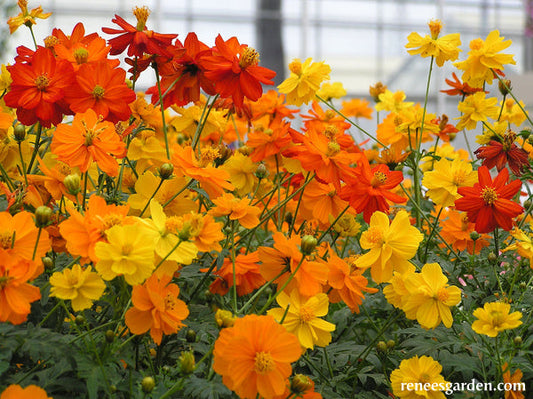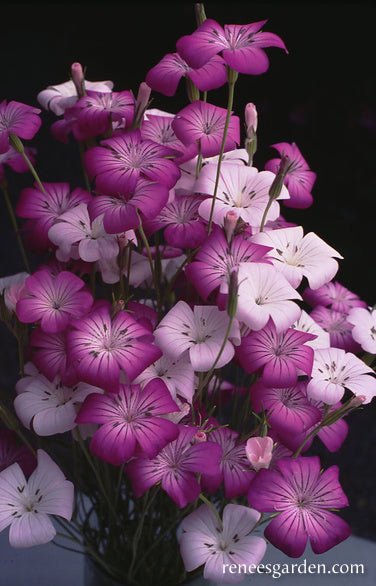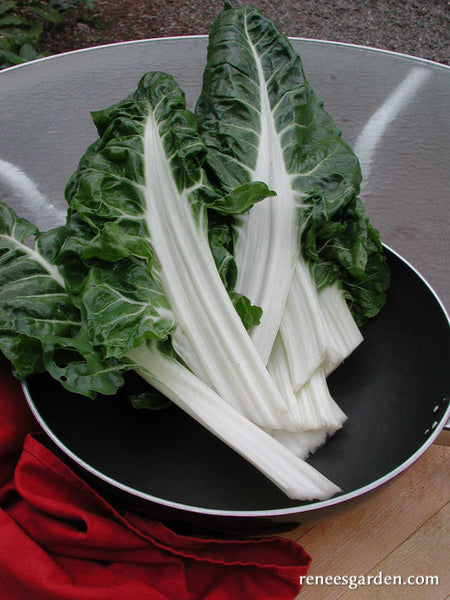Heirloom Selection
Heirloom Selections
-
Heirloom Bush Bean Royalty Purple Pod
START SEEDS OUTDOORS
In spring, once weather is warm and settled and nights stay securely above 55°F (13°C), plant seeds in well-worked, fertile soil in full sun. Poke seeds in 1 inch deep and 4 inches apart in rows 1 1/2 to 2 feet apart. Make additional sowings several weeks apart until the end of June to provide long continued harvests.
GROWING NOTES
Tender crispy garden beans are an easy and reliable crop to grow, but don't plant seeds too early as cold conditions prevent good germination. If first sowing comes up unevenly, replant right away; new seedlings will catch up quickly. Birds are often attracted to young bean seedlings, so watch carefully and protect with netting or floating row covers if necessary. Avoid cultivating plants or picking pods when plants are wet.
HARVEST AND USE
These vigorous plants produce strong harvests. The more you pick, the more the plants will produce, and the nitrogen fixing bacteria on the roots of bean plants actually improves your soil. Sow another crop about three weeks after your first planting and you’ll have a welcome second harvest in late summer. Tasty Royalty Purple Pod bean pods will turn green after a few minutes of cooking.
Regular price $4.89Sale price $4.89Unit price / per -
Heirloom Amaranth Love Lies Bleeding
ANNUAL
Summer/fall bloom
Frost tenderEASIEST TO START OUTDOORS
Sow seeds in full sun in ordinary well-worked garden soil when weather is warm and settled and all danger of frost is past. Space tiny seeds 3 to 4 inches apart or as thinly as possible. Cover lightly and keep moist until seedlings emerge in 7 to 10 days.
TO START EARLY INDOORS
Several weeks before last frost date, sow seeds 1 inch apart in containers or individual pots of well-drained seed starting mix, cover lightly and keep moist. Provide a strong light source until seedlings are ready to plant outside when weather is warm and settled and before seedlings get too crowded. Thin or transplant seedlings 18 to 24 inches apart when seedlings are large enough to handle so the large plants will have room to grow.
GROWING NOTES
This dramatic annual is easy to grow, sun loving and drought-tolerant. The large plants make striking garden companions to taller flowers like Sunflowers or Tithonia. Love Lies Bleeding’s draping blossoms with their rich color and unusual touchable texture are long-lasting focal points for large arrangements. Let some flowers set seeds in the garden to self sow.
Regular price $2.99Sale price $2.99Unit price / per -
Butterfly Flowers White Bishop's Lace
ANNUAL
Spring/summer/fall bloom
Can handle light frostBEST TO START DIRECTLY IN THE GARDEN
Sow seed thinly into a finely textured garden bed in full sun as early in spring as ground can be worked. Cover 1/4 inch deep and keep soil moist. Weed and water young seedlings carefully and thin before they get too crowded.
TO START EARLY INDOORS
Start seed indoors 6 weeks before last spring frost date. Sow seeds as thinly as possible in a container or individual pots of seed starting mix. Cover very lightly, keep evenly moist and provide a strong light source until seedlings are ready to plant outdoors. Transplant carefully to avoid disturbing roots. Thin or transplant seedlings 8 to 10 inches apart when large enough to handle.
GROWING NOTES
Bishop’s Lace grows easily in most garden conditions. Make several sowings a few weeks apart through late spring for a succession of bloom. In mild winter climates, sow again in late fall for earliest spring displays. Use Bishop’s Lace as a delicate filler flower for adding texture and dainty substance to every bouquet.
Regular price $2.99Sale price $2.99Unit price / per -
Heirloom Flowering Vines Cathedral Bells
TENDER PERENNIAL VINE
Summer/fall bloom
Usually grown as annualFOR BEST RESULTS
Sow seed indoors in a warm place 6 to 8 weeks before night temperatures are reliably in the 50°F (10°C) range. Plant 2 seeds per individual 4 inch pot of seed starting mix. Maintain at 70-80°F (21-27°C). Keep moist but not soggy. Germination takes 10 to 21 days. Thin to strongest seedling per pot. Provide a strong light source until ready to go outside. When weather has warmed evenly, acclimate to outdoor conditions and carefully transplant 1 foot apart and 3 inches from supports.
TO START OUTDOORS
Seed can be sown outdoors once nights are reliably above 50° but only in areas with a long warm season. Plant in full sun 4 to 6 inches apart, ½ inch deep and 3 inches from supports. Firm soil well over seeds. When seedlings are well established, thin to stand 1 foot apart, so these vigorous vines have ample room to grow.
GROWING NOTES
Cathedral Bells need full sun and moist, well-drained soil. They bloom mid to late summer. Provide climbing vines with well-anchored supports at least 10 feet tall; use a sturdy trellis or arbor, or a wood or wire fence. Stems cling by branched tendrils that grow on the end of each leaf stalk.
Regular price $3.99Sale price $3.99Unit price / per -
Perfumed Heliotrope Deep Marine
ANNUAL
Summer/fall bloom
Frost tenderBEST TO START EARLY INDOORS
Start seeds 8-9 weeks before last spring frost. Sow seeds 1 inch apart in a container of moist seed starting mix. Press down lightly, but not cover as heliotrope seeds need light to germinate. Keep warm and moist but not soggy, and provide a strong light source. When large enough to handle, transplant seedlings into individual 4 inch pots to grow on until sturdy and well-established.
Be sure to acclimate seedlings to outdoor conditions before planting outdoors. Transplant into rich, well drained soil in full sun or, in hot summer areas, a spot that has afternoon shade.
THIN OR TRANSPLANT
When large enough to handle, transplant strong, well acclimated seedlings, spacing them 10 inches apart.
GROWING NOTES
Feed heliotropes monthly throughout the growing season for best plants and flowers. With their richly scented flowers and dark foliage, heliotropes make pretty container plants. Combine with bright sunny colors or soft pastels for striking displays. Cut plants back in late summer for fresh regrowth and bloom.
Regular price $3.69Sale price $3.69Unit price / per -
Heirloom Apricot Foxglove Faerie Queen
BIENNIAL
Spring/Summer bloom
Frost hardyBEST TO START SEEDS INDOORS
Sow seeds as thinly as possible in a container of seed starting mix. Cover 1/8 inch deep with mix, keep moist and between 60-70°F (16-21°C). Provide a strong light source until seedlings are ready to plant into the garden. Feed every 2 weeks with half-strength fertilizer. Once seedlings are large enough to handle, transplant 2 to 3 inches apart into a deeper container or individual pots so root systems have room to develop. When plants are 3 to 4 inches tall, gradually acclimate to outdoor conditions and plant out in well-drained soil. Thin or transplant seedlings 18 to 24 inches apart so they have room to mature.
GROWING NOTES
Foxgloves do well in dappled sunlight all day or full morning sun. In mild summer areas, they handle full sun all day. Foxgloves appreciate rich fertile soil and consistent moisture. Cut spent flower stalks back to the base of the plant to encourage repeat bloom and flowering side shoots. These biennial plants need the winter season’s cold to initiate flowering, so sow seeds any time from spring to midsummer to have well-established seedlings for bloom the following spring.
Regular price $3.39Sale price $3.39Unit price / per -
California Poppies Dancing Ballerinas
ANNUAL
Spring/Summer/Fall bloom
Can handle light frostBEST TO START DIRECTLY IN THE GARDEN
Sow seeds directly into a finely textured, well-drained garden bed in full sun as early in spring as the ground can be worked. Plant as early as possible in spring, as poppies can handle light frost and bloom best and longest when plants get a good start in cool weather. In mild winter climates, Poppies can also be sown in late fall to overwinter for spring bloom. Except in very poor soil, these California poppies will grow and flower readily with no added fertilizer. Space seeds several inches apart, cover no more than 1/4 inch deep, and firm soil gently. Keep soil moist as seedlings emerge. If seedlings come up very thickly, thin poppies early but delay final thinning until seedlings are well established in spring. Space seedlings, 4-6 inches apart as plants need room to grow and bloom.
GROWING NOTES
When mature, poppy plants can handle dry conditions, but they will always bloom brighter and longer if regularly watered and are kept well weeded. Poppies are pretty cut flowers if brought indoors just as buds begin to open. At season’s end, allow spent flowers to form pods and drop seed if you want poppies to self-sow for next year's spring flowers.Regular price $3.99Sale price $3.99Unit price / per -
Butterfly Flowers Flashback Calendula
HARDY ANNUAL
Spring/fall bloom
Takes light frostTO START OUTDOORS
Calendulas bloom best in cool weather, so plant in early spring. Sow seeds 1 inch apart in well-drained soil in full sun. Cover 1/2 inch deep, firm soil and keep seed bed moist. Germination takes 1 to 2 weeks. After seedlings are well established, thin or transplant 8 inches apart to allow for good air circulation and discourage mildew. Calendulas can be sown again in midsummer for fall bloom.
TO START EARLY INDOORS
In early spring, sow seeds 1 inch apart in a container of seed starting mix and cover 1/2 inch deep. Keep evenly moist as seedlings emerge and provide a good light source until ready to plant outdoors. Transplant when seedlings are about 2 to 3 inches tall after gradually acclimating plants to outdoor conditions. Thin or transplant seedlings 8 inches apart for best performance.
GROWING NOTES
Plant when weather is cool to get sturdy plants that bloom for many weeks if faded flowers are removed. Grow this quick-flowering, easy annual along with snapdragons, cornflowers and pansies for late spring bloom. In mild climates, sow again in late summer for winter or very early spring flowers.
Regular price $2.99Sale price $2.99Unit price / per -
Forget-Me-Nots Azure Bluebirds
HARDY ANNUAL
Spring/summer bloom
Can handle frostEASIEST TO PLANT DIRECTLY IN THE GARDEN
Sow seeds directly into a finely textured, well-drained garden bed as early in spring as the ground can be worked, or in mid-summer where winters have only light frosts. Space seeds 2 to 3 inches apart and cover 1/4 inch deep. Keep soil moist as seedlings emerge in 7 to 14 days. Weed young seedlings carefully and thin before they get too crowded for best displays of flowers.
THIN OR TRANSPLANT
Extra thinned seedlings can easily be transplanted elsewhere in groups of 5-7 plants.
GROWING NOTES
In mild winter climates plants sown in midsummer (late July to mid August) develop throughout late summer and early autumn to flower abundantly the following spring.
In cold winter areas very early spring planting is fine. Forget-Me-Nots will naturalize easily. Pull out plants when bloom is finished and shake seed out if you want them to naturalize on their own.
Regular price $2.99Sale price $2.99Unit price / per -
Hummingbird's Choice Color Fountains Cleome
ANNUAL
Summer/fall bloom
Frost tenderTO START OUTDOORS
In spring when all danger of frost is past and weather is warm and settled, sow seeds in a well-worked, fertile seed bed in full sun. Space seeds 2 to 3 inches apart in rows 12 inches apart, cover about 1/8 inch deep and firm soil gently. Keep soil evenly moist while awaiting germination in 12 to 28 days.
TO START EARLY INDOORS
Four to five weeks before last frost date, sow seeds 1/8 inch deep and 2 to 3 inches apart in a container of seed starting mix. Keep warm and moist and provide a strong light source until seedlings are ready to plant outdoors. Seeds germinate best when day and night temperatures vary 10 to 20°. Thin or transplant seedlings 12 to 14 inches apart to give the large plants room to mature.
GROWING NOTES
Tall old-fashioned Cleome is perfect to plant at the back of the border or in a cut flower garden combined with phlox, asters, snapdragons, cosmos or zinnias. Keep young plants well watered and weeded, and they will mature to handle dry heat or humid weather well and bloom all summer long.
Regular price $2.99Sale price $2.99Unit price / per -
Heirloom Cornflowers Blue Boy
HARDY ANNUAL
Spring/summer bloom
Can handle light frostTO START OUTDOORS
Sow seeds in a finely textured garden bed in full sun as soon as soil can be worked. In mild winter areas, where the ground doesn’t freeze, plant in fall for next spring’s bloom. Space seeds 1 to 2 inches apart and cover 1/2 inch deep. Keep seed bed moist until seedlings emerge in 7 to 10 days. Weed and water carefully. Thin seedlings to 6 to 8 inches apart.
TO START EARLY INDOORS
Sow seeds 1 to 2 inches apart in a container of seed starting mix, 2 or 3 weeks before last expected frost. Cover 1/2 inch deep, keep moist and provide a good light source until seedlings are transplanted outside. Plant 6 to 8 inches apart into fertile garden soil in full sun when plants are 3 to 4 inches tall. Seedlings grow quickly; plant out before the roots get crowded.
GROWING NOTES
In mild winter areas the best cornflowers (aka Bachelor Buttons) result from seeds sown in fall to bloom the next spring. In cold winter areas where ground freezes, plant in early spring to get sturdy plants that will flower for many weeks if faded blossoms are removed.
Regular price $2.99Sale price $2.99Unit price / per -
Heirloom Nasturtiums Climbing Phoenix
ANNUAL
Spring/Summer/Fall bloom
Frost tenderEASY TO START OUTDOORS
Sow seeds in spring once all danger of frost is over in full sun (or part shade in hot climates). Nasturtiums need no added fertilizer in most soils. Poke seeds into well-worked soil about 1 inch deep and 3 to 4 inches apart. Press soil firmly over the seeds and keep moist. When seedlings are large enough to handle, thin to stand 10 inches apart, or 6 to 8 inches apart if training seedlings up vertical supports.
TO START EARLY INDOORS
Sow 2 seeds each in individual 4-inch pots of well-drained seed starting mix 3 weeks before last expected frost date. Cover 1 inch deep. Provide a strong light source. When seedlings have several sets of leaves, pinch out the weaker seedling leaving 1 seedling per pot. When weather is evenly in the 50°F (10°C) range, gradually acclimate to outdoor conditions. Transplant as above in full sun.
GROWING NOTES
Climbing nasturtiums are easy to grow in any well-drained soil. You’ll need to train young plants onto their supports with loose ties, then they’ll climb easily and bloom non-stop. Do not let plants dry out during blooming season. If aphids become a problem, wash them off with a strong spray of water or spray with non-toxic Safer’s Soap solution. Phoenix’s bright confetti like blossoms are true summer beacons for hungry hummingbirds.
Regular price $3.99Sale price $3.99Unit price / per -
Heirloom Columbines Mrs. Scott Elliot
PERENNIAL
Spring/summer/bloom
Frost hardyTO START EARLY INDOORS
In early spring, 6 to 8 weeks before last expected frost date, sow seeds 1 inch apart in seed starting mix. Cover 1/8 inch deep, keep moist and provide a strong light source until seedlings are ready to plant outdoors. Be patient; these small perennial seeds germinate slowly in 14 to 21 days. Once seedlings are large enough to handle, transplant 2 to 3 inches apart into a deeper container so root systems have room to develop. Feed every 2 weeks with half-strength fertilizer. When plants are 2 to 3 inches tall, gradually acclimate to outdoor conditions and plant 12 inches apart in fertile, well-drained soil in sun or partial shade.
TO START OUTDOORS
Sow seeds in fine textured, well-drained soil when danger of frost is past. Space seeds 2 to 3 inches apart, cover 1/4 inch deep and gently firm soil. Keep evenly moist. When seedlings are well-established, thin 12 to 18 inches apart.
GROWING NOTES
Perennial Columbines sown indoors in January will bloom the same year. Seeds sown later, any time until mid-summer, will establish themselves to bloom the following spring. In hot summer areas, plant in partial shade. Where summers are moderate, plant in full sun. Columbines thrive in moist, fertile soil.
Regular price $2.99Sale price $2.99Unit price / per -
Pole Filet Beans French Gold
START SEEDS OUTDOORS
In late spring, once night temperatures stay securely above 55°F, plant seeds in well-worked, fertile soil in full sun. Erect strong stakes, tripod poles or trellis at planting time to support vines. Plant 1 inch deep and 4 inches apart along a trellis; around tripods or stakes, plant 4 to 6 seeds about 4 inches from each pole, thinning seedlings to 3 best plants per pole.
GROWING NOTES
Beans are an easy and reliable crop, but don’t plant seeds too early; cold conditions prevent good germination. If first sowing comes up unevenly, replant right away; new seedlings will catch up quickly. Birds are attracted to young seedlings; watch carefully and protect with netting if necessary. Avoid harvesting beans in wet conditions.
HARVEST AND USE
For the best yields, pick beans frequently, at least every 2 or 3 days. Filet beans are meant to be eaten when pods are long and slender, so harvest the tender pods early, when they are still pencil-thin. These elegant gourmet beans taste best freshly harvested and quickly steamed or sautéed. When blanched and tossed in an herbed vinaigrette with salad greens and fresh herbs like Italian parsley, basil or a little fresh thyme, French Gold beans make a beautiful and delicious salad.
Regular price $4.69Sale price $4.69Unit price / per -
Heirloom Double Feverfew White Wonder
PERENNIAL
Summer/fall bloom
Frost hardyTO START EARLY INDOORS
Five or six weeks before last expected frost date, sow seeds as thinly as possible in a container of seed starting mix. Cover lightly, keep warm and moist and provide a strong light source. When large enough to handle, transplant seedlings into a deeper container 2 inches apart so roots have growing room. When seedlings are 2 or 3 inches tall, transplant 10 inches apart after acclimating to outdoor conditions.
TO START OUTDOORS
When danger of frost is past, sow in full sun in well-drained, finely worked garden soil. Space tiny seeds as thinly as possible in rows 10 inches apart, cover about 1/4 inch deep and gently firm soil. Keep soil evenly moist while awaiting germination in 10 to 14 days. Thin before seedlings get crowded to a final spacing of 10 inches apart as plants need room to mature.
GROWING NOTES
These pretty white blossoms showing just a hint of yellow at their centers will add delicacy and freshness to your mixed summer bouquets. Keep spent flowers cut for rebloom all summer. Well-drained soil is important for long-lived feverfew plants.
Regular price $2.99Sale price $2.99Unit price / per -
Heirloom Four O'Clocks Broken Colors
PERENNIAL GROWN AS ANNUAL
Summer/fall bloom
Frost tenderEASIEST TO START OUTDOORS
Plant in full sun in ordinary garden soil when spring weather is warm and settled and all danger of frost is past. Poke seeds into well-worked soil about 1/2 inch deep, 4 to 5 inches apart. Firm soil over seeds. Keep moist until germination in 10 to 12 days.
TO START EARLY INDOORS
Seeds can be started indoors about 4 weeks before last expected frost, but since Four O’Clocks grow so quickly, we advise sowing directly into the garden in all but very short summer areas. Thin or transplant seedlings 12 inches apart when they are large enough to handle so plants have ample room to grow and mature.
GROWING NOTES
Vigorous, free blooming Four O’Clocks grow quickly and will effortlessly fill in borders or large open areas to bloom in the afternoons and evenings beginning in mid-summer. If possible, plant Broken Colors close to where you pass by often, so you can enjoy their delicious soft perfume that fills the air. In mild winter climates, Four O’Clocks’ self-sow readily, so remove the seed pods before seeds fall to the ground if you don’t want plants to spread around the garden.
Regular price $3.99Sale price $3.99Unit price / per -
Hummingbird Favorites Heirloom Cardinal Climber
ANNUAL VINE
Summer/fall bloom
Frost tenderTO START OUTDOORS
In spring, wait until temperatures are above 50°F (10°C) both day and night before planting seeds in full sun in ordinary garden soil 4 to 6 inches apart and 1/2 inch deep. Firm soil over seeds and keep evenly moist but not soggy.
TO START EARLY INDOORS
Sow seeds indoors 4 or 5 weeks before last expected frost in individual 4 inch pots of seed starting mix. Cover 1/2 inch deep and keep warm and moist. After seedlings have several leaves, thin to the strongest seedling per pot. Provide a strong light source until seedlings are ready to plant outdoors. When spring weather has warmed, acclimate seedlings to outdoor conditions before planting outdoors. Thin or transplant seedlings 10 to 12 inches apart and several inches from supports when large enough to handle. Avoid disturbing roots.
GROWING NOTES
Be sure to erect well-anchored, sturdy supports at least 8 feet tall at planting time; strong netting, a fence or a strong trellis is needed to hold these vigorous and rapid climbers that bloom at midsummer. Note: seeds are poisonous; keep from kids and pets.
Regular price $2.99Sale price $2.99Unit price / per -
Chinese Delphiniums Heirloom Blue Mirror
PERENNIAL/ BLOOMS FIRST YEAR
Summer/fall bloom
Hardy to Zone 3START EARLY INDOORS
In spring, 8 to 10 weeks before last expected frost, sow seeds 1 inch apart in a container of seed starting mix. Cover 1/4 inch deep, keep moist and provide a strong light source until seedlings are ready to plant outdoors. Feed seedlings every 2 weeks with half-strength fertilizer. Once large enough to handle, transplant seedlings 3 inches apart into deeper containers so root systems have room to develop. When plants are 3 to 4 inches tall, gradually acclimate to outdoor conditions and transplant 10 to 12 inches apart into a sunny garden spot with well-drained soil.
GROWING NOTES
Sow Blue Mirror in early spring for mid-summer flowers the first year, late spring bloom in subsequent years. Plants can handle more summer heat than the traditional delphinium varieties. Patrol for snails and slugs on new leaves and shoots. When each flush of flower finishes, cut stalks back to plant base to encourage reblooming. Water well and fertilize regularly throughout the growing season. Plants will die back and go dormant in winter. Leave dead foliage until early spring so you know where plants are, but cut the dead branches off at first signs of new spring growth.
Regular price $4.69Sale price $4.69Unit price / per -
Heirloom Dill Leafy Diana
EASIEST TO PLANT OUTDOORS
In early spring, sow dill seed directly into well-drained garden soil 1 to 2 inches apart in rows 6 inches apart in full sun and cover seeds 1/4 inch deep. Make small sowings every few weeks to have successive harvests of fresh leaves. Keep seed bed evenly moist while awaiting germination in 7 to 14 days.
TO START INDOORS
Sow dill seed thinly in individual pots of seed starting mix. Cover 1/4 inch deep and keep moist as seedlings emerge in 7 to 14 days. Provide a good light source. Transplant when seedlings are about 2 inches tall after gradually acclimating to outdoor conditions. Don’t let seedlings get crowded before planting outside.
THIN OR TRANSPLANT
Space groups of 2 or 3 seedlings about 4 inches apart when seedlings are large enough to handle.
GROWING NOTES
Keep plants well watered and thinned; crowded seedlings won’t make the lush growth desired for fresh leaf harvests and will form seed heads too early. Make several successive sowings for plenty of leafy dill fronds followed by seed heads to use for pickles and other savory dishes.
Regular price $4.89Sale price $4.89Unit price / per -
Heirloom Oregano White Flowered Greek
TO START INDOORS
In early spring, sow seeds thinly in a container of moistened seed starting mix, but do not cover over; oregano needs light to germinate. Provide a good light source. Keep evenly moist as seedlings slowly emerge over 10 to 21 days.
TO PLANT DIRECTLY IN THE GARDEN
When warm spring weather arrives, sow in full sun in a well-worked, finely textured seedbed with good drainage. Sow thinly, then water very gently for good soil contact, but do not cover seeds. Tend carefully: keep soil evenly moist but not soggy and well weeded.
GROWING NOTES
Mix tiny seeds with dry sand to help space seedlings. Young plants grow slowly at first; a good hot spell encourages strong growth. Pick leaves lightly the first season; wait until the second summer to make bigger harvests, then cut leafy sprays often to enjoy in the kitchen. Given good drainage, this carefree Mediterranean native is hardy and long-lived.
Regular price $4.89Sale price $4.89Unit price / per -
Butterfly Cosmos Little Ladybirds
ANNUAL
Summer/fall bloom
Frost tenderTO PLANT OUTDOORS
Sow seeds directly into well worked garden soil in full sun once all danger of frost is past. Space seeds 2 to 3 inches apart and cover about 1/4 inch deep. Seedlings will emerge in 5 to 10 days. Keep well weeded and watered.
TO START EARLY INDOORS
Sow seeds 1 inch apart in a container of seed starting mix, 4 to 6 weeks before last expected frost. Cover 1/4 inch deep, keep moist and provide a good light source. Plant outdoors once weather warms up after gradually acclimating seedlings to outdoor conditions. Thin or transplant 5 to 6 inches apart when seedlings are large enough to handle.
GROWING NOTES
Little Ladybirds are quick to bloom, carefree and non-fussy. Use instead of marigolds in sunny borders, or to line a garden path. The brilliant warm colors and clean fern-like foliage combine beautifully with other heat-tolerant flowers. Feed and water regularly especially if planting in patio pots.
Regular price $2.99Sale price $2.99Unit price / per -
Heirloom Flowers Mountain Garland Clarkia
HARDY ANNUAL
Summer/Fall bloom
Can handle light frostEASIEST TO START DIRECTLY IN THE GARDEN
As early in spring as ground can be worked, sow seeds 1 inch apart into a finely textured garden bed in full sun. In climates where the ground doesn’t freeze, sow seed in late fall for bloom the following spring. Cover very lightly, about 1/8 inch deep and keep soil moist as seedlings emerge. Weed and water carefully and thin before they get too crowded.
TO START EARLY INDOORS
Start seed indoors 4 weeks before last spring frost date. Sow seeds an inch apart in a container of seed starting mix. Cover very lightly, keep evenly moist and provide a strong light source until seedlings are ready to plant outdoors. Plant in the garden when seedlings are large enough to handle. Thin or transplant seedlings 6 inches apart.
GROWING NOTES
Clarkia grows well in a wide range of conditions, but if you are in a very hot, humid climate, planting in a spot with afternoon shade will extend flowering. These carefree wildflowers thrive in well-drained soil. Plant in mixed borders or anywhere you want an informal effect of vibrant color and armfuls of entrancing flowers to bring indoors.
Regular price $2.99Sale price $2.99Unit price / per -
Agrostemma Purple Queen and Pink Contessa
HARDY ANNUAL
Spring/summer bloom
Frost HardyBEST TO PLANT DIRECTLY IN THE GARDEN
Mild Winter Climates: Sow seeds either in early spring or in late fall to germinate and form deep roots for a long spring bloom.
Cold Winter Climates: Sow seed as early in spring as soil can be worked. Space seeds 1 to 2 inches apart in well-drained soil in full sun or partial shade in hot areas. Cover 1/4 inch deep, firm soil and keep seed bed moist. Be patient; germination takes 14 to 21 days. After seedlings are well established and 2 or 3 inches tall, thin or transplant 8 to 10 inches apart. Keep plants well watered and weeded for best performance.
TO START EARLY INDOORS
Sow seeds 1 inch apart in seed-starting mix, 4 to 6 weeks before last expected frost. Cover 1/4 inch deep, keep moist and provide a good light source until ready to plant outside when the weather warms up. Thin or transplant seedlings 8 to 10 inches apart when large enough to handle.
GROWING NOTES
Spring Sowing: plant seed as early as soil can be worked to get sturdy plants that will provide many weeks of graceful bloom.
Fall Sowing: wait until soil has cooled in late fall. Extend the blooming season by cutting faded flowers before seed pods develop.
Regular price $3.39Sale price $3.39Unit price / per -
Heirloom Chard Italian Silver Rib
START SEEDS OUTDOORS
In early spring when danger of hard frost is over, sow seeds in well-worked, fertile soil in full sun. Sow seeds 1/2 inch deep and 2 inches apart in rows 10 inches apart, or broadcast very thinly for bed planting. Firm soil well over these irregularly shaped seeds to ensure good germination. If first sowing germinates unevenly, plant more seed in the rows as seedlings catch up quickly. Thin when seedlings are large enough to handle, using thinnings as early greens. Final spacing should be 12 to 18 inches apart so chard plants have room to mature.
GROWING NOTES
Chard grows well in a wide range of conditions and can take some frost. In mild winter areas, it can be grown year round. Thin seedlings well as chard grows into large vase-shaped plants 2 feet tall.
HARVEST AND USE
Begin harvesting when plants are well established and have 6 to 8 stalks. Both the crunchy succulent stalks and leaves make great eating. Chop and sauté chard with garlic and olive oil or pair with sautéed mushrooms and onions. Try steamed and topped with a sprinkle of vinegar or fresh lemon juice. Use like spinach in lasagna or minestrone soup.
Regular price $2.99Sale price $2.99Unit price / per

